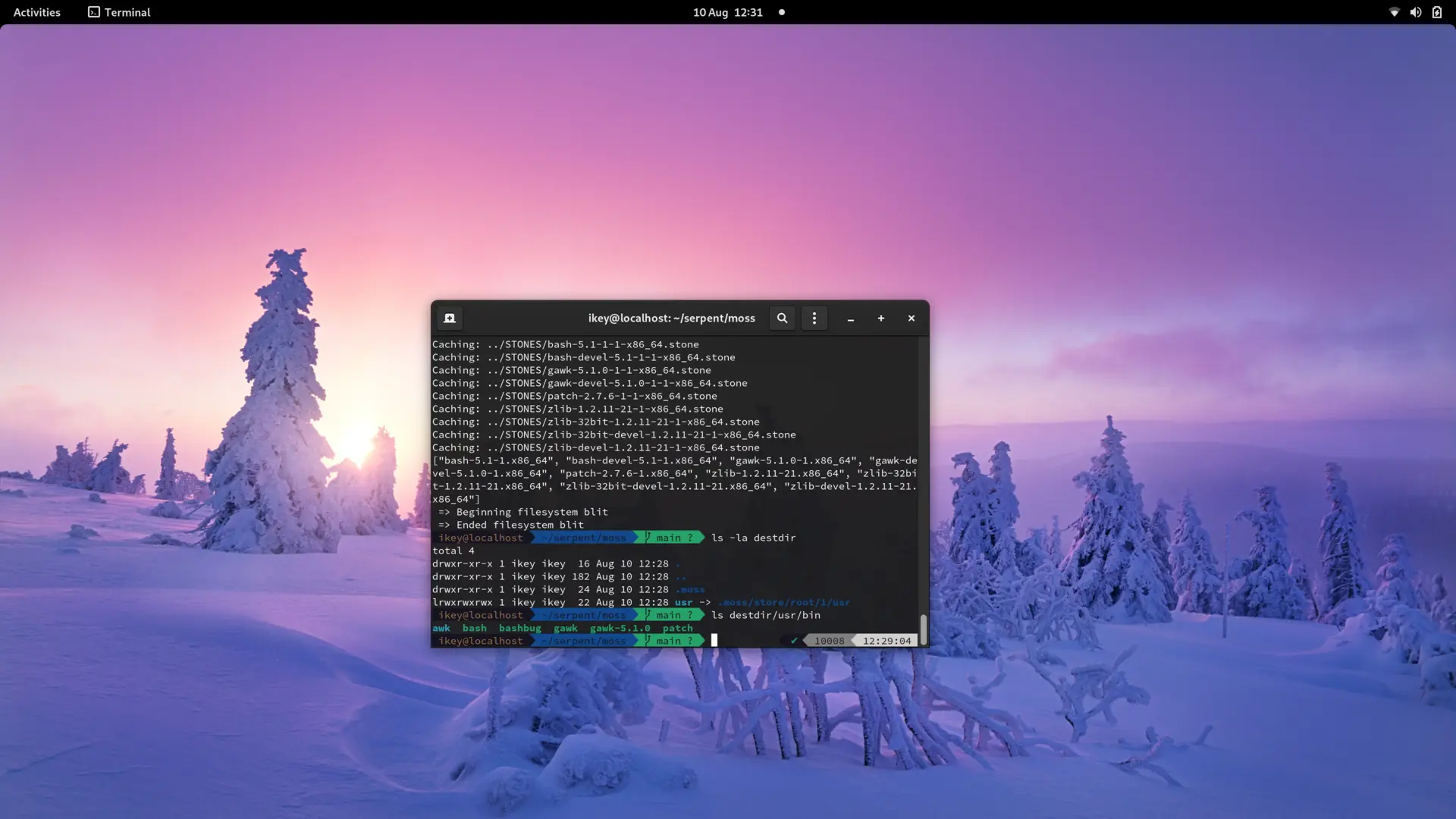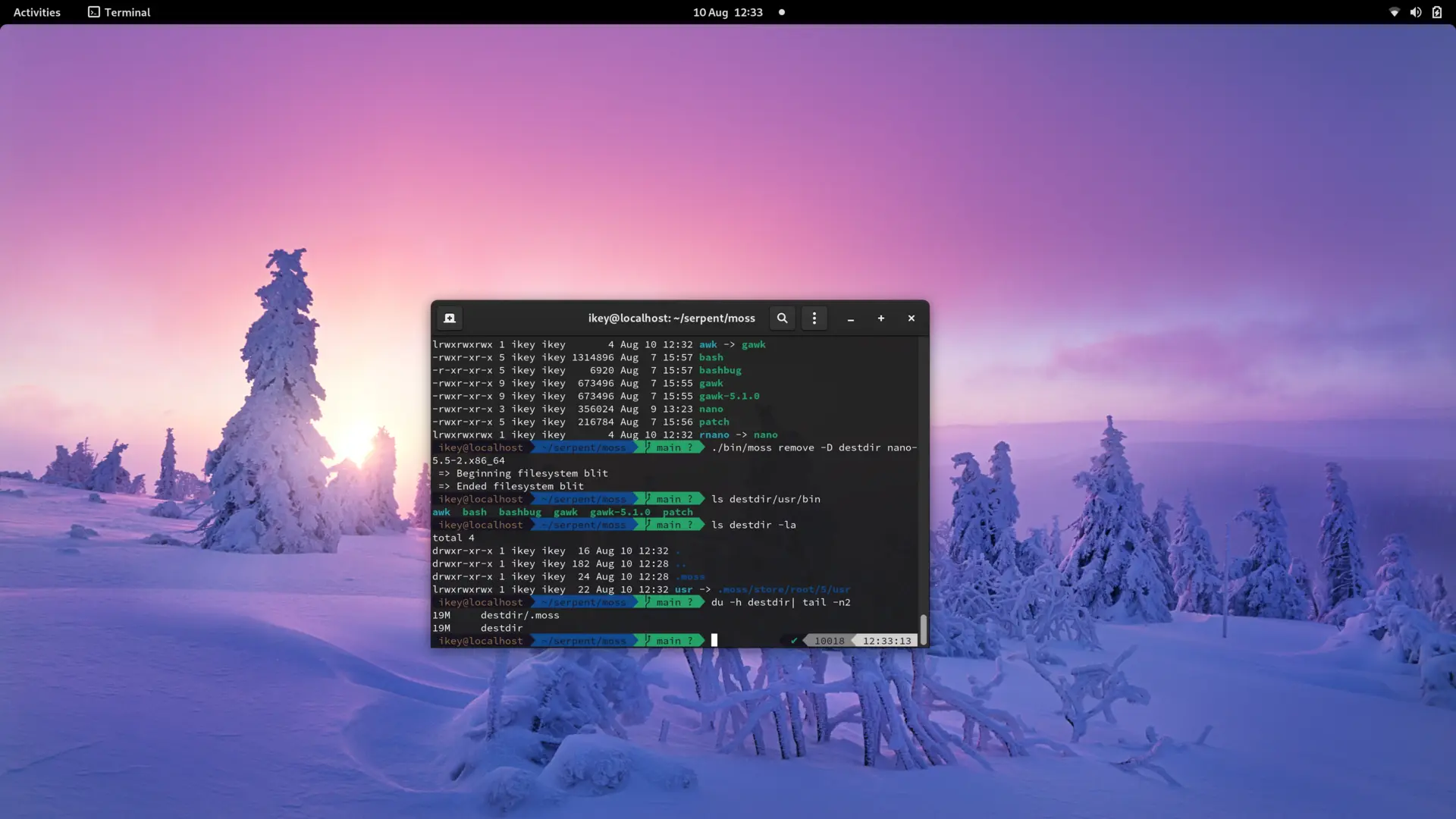We actually did it. Super pleased to announce that moss is now capable
of installing and removing packages. Granted, super rough, but gotta start
somewhere right?

OK let's recap. A moss archive is super weird, and consists of multiple
containers, or payloads. We use a strongly typed binary format, per-payload
compression (Currently zstd), and don't store files in a typical archive
fashion.
Instead a .stone file (moss archive) has a Content Payload, which is
a compressed "megablob" of all the unique files in a given package. The
various files contained within that "megablob" are described in an IndexPayload,
which simply contains some IDs and offsets, acting much like a lookup table.
That data alone doesn't actually tell us where files go on the filesystem when installed. For that, we have a specialist Layout Payload, encoding the final layout of the package on disk.
As can be imagined, the weirdness made it quite difficult to install in a trivial fashion.
Databases
Well, persistence really. Thanks to RocksDB and our new moss-db project,
we can trivially store information we need from each package we "precache".
Primarily, we store full system states within our new StateDB, which at
present is simply a series of package ID selections grouped by a unique
64-bit integer.
Additionally we remember the layouts within the LayoutDB so that we can eventually recreate said layout on disk.
Precaching
Before we actually commit to an install, we try to precache all of the stone files in our pool. So we unpack the content payload ("megablob"), split it into various unique files in the pool ready for use. At this point we also record the Layouts, but do not "install" the package to a system root.
Blitting
This is our favourite step. When our cache is populated, we gather all relevant layouts for the current selections, and then begin applying them in a new system root. All directories and symlinks are created as normal, whereas any regular file is hardlinked from the pool. This process takes a fraction of a second and gives us completely clean, deduplicated system roots.
Currently these live in /.moss/store/root/$ID/usr. To complete the transaction,
we update /usr to point to the new usr tree atomically assuming that
a reboot isn't needed. In future, boot switch logic will update the tree for us.
Removal
Removal is quite the same as installation. We simply remove the package IDs
from the new state selections (copied from the last state) and blit a new
system root, finally updating the atomic /usr pointer.

Tying it all together
We retain classic package management traits such as having granular selections, multiple repositories, etc, whilst sporting advanced features like full system deduplication and transactions/rollbacks.
When we're far enough along, it'll be possible to boot back to the last working transaction without requiring an internet connection. Due to the use of pooling and hardlinks, each transaction tree is only a few KiB, with files shared between each transaction/install.
On the list..
We need some major cleanups, better error handling, logging, timed functions, and an eventloop driven process to allow parallel fetching/precaching prior to final system rootfs construction.
It's taken us a very long time to get to this point, and there is still more work to be done. However this is a major milestone and we can now start adding features and polish.
Once the required features are in place, we'll work on the much needed pre alpha ISO :) If you fancy helping us get to that stage quicker, do check out our OpenCollective! (We won't limit prealpha availability, don't worry :))